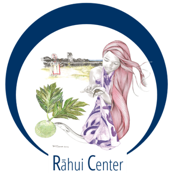Tikehau
In Tikehau, fish parks are the most used fishing technic. The important catches from these fish pens advocate for the design of a sustainable marine resources management plan.© jcobnasyr on Unsplash

560
inhabitants in 2017

20 km²
of land

461 km²
of lagoon
Tikehau is one of the four associated municipalities of Rangiroa. This Tuamotus atoll is one of the most productive in lagoon fish in French Polynesia. Each year, he exports more than thirty tons of fish to Tahiti. From the 1960s, thanks to its fish parks Tikehau turned to commercial fishing. These fish pens, fitted out with steel or plastic fencing stretched over iron stakes, are generally placed near or inside the passes. In Tikehau we find them in the only pass of the atoll, the Tuheiava pass. They catch a lot of fish regardless of the species, and represent more than 80% of the fish captured in the lagoon.
Is this fishing system sustainable ? After several discussions with local authorities and representatives of fishermen and women, the center team tries to better understand the organization of fishing in Tikehau and assess the volumes taken each year. Data collected will be used to design, in collaboration with local stakeholders, a sustainable way of managing lagoon resources.
WHAT WE HAVE DONE
Presentation of the project and discussions with local stakeholders
Meeting with municipal team to present the methodology and tools available to the populations in order to design and implement a managed marine area and to understand local context and issues.
Meeting with fishers to discuss with the main challenges they identify in terms of fishing, changes in fish stocks, governance for resource management, etc.
Exploratory mission of the Tikehau lagoon to confirm research hypotheses: spotting the pass, diving in a fish park to get an overview of caught species diversity, diving on a karena or pinnacle (vertical coral formation that can emerge from the surface of the water) in the center of the lagoon and review of a hoa (shallow channel that intersects the crown reef) and its immediate environment.
© auteur
Design of research questions and survey protocols
Establishment of a counting method for commercial fish and macro-invertebrates and substrate identification to assess abundance and diversity of commercial fish in different sites inside and outside the lagoon
Design of a method for monitoring fish stocks with regular catch records between October and March (high fishing season).
WHAT WE PLAN TO DO
- Control juvenile recruitment location on the southeast coast and understand juveniles disersal inside the lagoon by examining individuals circulation during their growth ;
- Identify trends and changes in the fish population since 1987 by analyzing existing statistical data and new data to be collected ;
- Collect and then analyze data (species, number of fish, size, etc.) concerning catches via fish pens.
